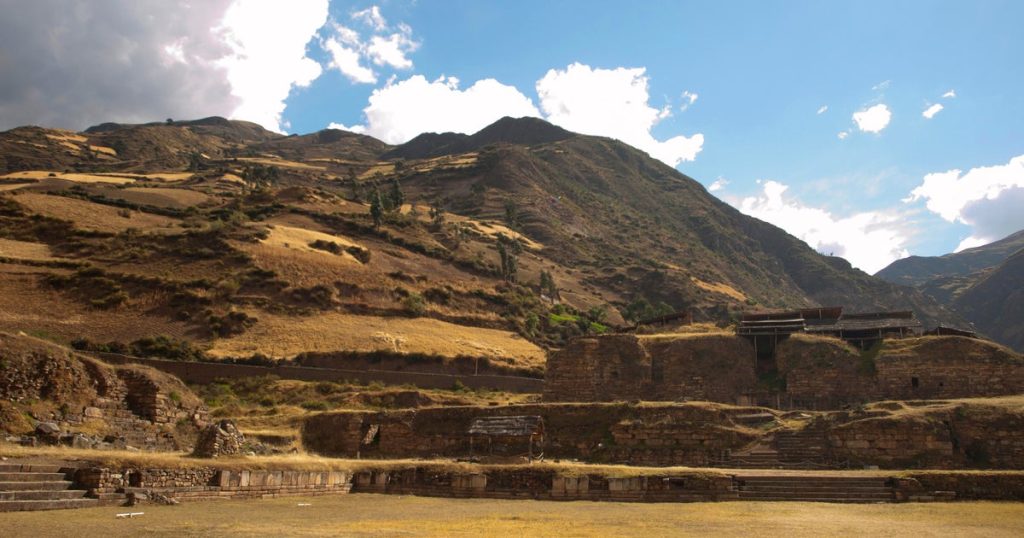An intriguing study has shed light on the ritual practices of the ancient Chavín civilization in the Peruvian Andes, suggesting that the elite utilized psychoactive substances to solidify social hierarchies. Led by anthropologist Daniel Contreras at the University of Florida, the research reveals the existence of special chambers within the Chavín de Huántar archaeological site, containing artifacts related to the consumption of hallucinogens like DMT. This groundbreaking work offers new insights into the cultural complexities of a society that predated the Inca civilization.
| Article Subheadings |
|---|
| 1) Insight into Chavín Rituals |
| 2) Discovery of Psychoactive Artifacts |
| 3) The Role of DMT in Ritual Practices |
| 4) The Significance of Restricted Access |
| 5) Implications for Understanding Chavín Society |
Insight into Chavín Rituals
The Chavín people thrived in the Andean region from approximately 1200 B.C.E. to around 400 or 500 B.C.E. They are considered predecessors to the Inca civilization and are often recognized for their advanced architectural and societal structures. The recent study published in the peer-reviewed journal Proceedings of the National Academy of Sciences provides a fascinating glimpse into the rituals that underpinned their social organization.
Research led by Daniel Contreras aimed to investigate the use of psychoactive substances within ritualistic contexts. Archaeological evidence had always suggested the presence of ritualistic behavior at Chavín de Huántar, but this new study provides concrete material evidence that elevates the understanding of these ancient practices. It posits that these rituals were not mere gatherings but significant events that contributed to the institution of social hierarchies within Chavín society.
Discovery of Psychoactive Artifacts
During excavations at Chavín de Huántar, researchers uncovered a series of concealed rooms, referred to as galleries, which were integral to the ritual activities of the society. Within these galleries, the team found 23 artifacts believed to be drug paraphernalia, specifically tubes that had been fashioned from bird bones. These tubes likely served as inhalation devices for psychoactive substances during ceremonial gatherings.
Chemical analysis revealed that six of these tubes contained traces of dimethyltryptamine (DMT), a potent hallucinogen that is found naturally in certain plants. Additionally, residues linked to tobacco were discovered, suggesting that the Chavín employed a combination of psychoactive substances, enhancing the transformative experiences desired during their ritual practices.
The Role of DMT in Ritual Practices
DMT is known for its capacity to induce profound visual hallucinations and altered states of consciousness. Researchers have noted that individuals who consume DMT often report mystical experiences and visions that can significantly impact their perception of reality. This component of hallucinogenic use was critical in establishing the religious and social dimensions of the Chavín rituals.
By engaging in these psychoactive experiences, elite members of the Chavín society likely cemented their power and role within the broader social framework. The temporary shifts in consciousness facilitated by these substances may have acted as a tool for social cohesion, enabling leaders to maintain authority and manage social relationships through shared and transformative experiences.
The Significance of Restricted Access
The study’s findings also emphasize the restricted nature of access to the ritual practices at Chavín de Huántar. It is indicated that only select members of society were invited to partake in these significant gatherings. The small size of the galleries supports this claim, suggesting that these rituals were exclusive and likely governed by defined social parameters.
In their findings, the research team concluded,
“Galleries were apparently foci of ritual activity, access to and content of which were institutionally controlled and managed.”
This control over who could engage in the rituals indicates a structured approach to social stratification, reinforcing the power dynamic that existed within Chavín society.
Implications for Understanding Chavín Society
The revelations from this research contribute significantly to archaeological and anthropological discussions regarding the Chavín civilization. By establishing a connection between psychoactive usage and the formulation of social hierarchies, the study invites a reevaluation of how ancient societies functioned and maintained their power. This understanding can yield insights not only into the Chavín but also into other civilizations throughout history that have employed similar methods.
These discoveries may also influence future archaeological studies, prompting researchers to examine other ancient sites for evidence of ritual substance use, thereby broadening the scope of understanding regarding the sociocultural dynamics of early civilizations. Furthermore, it establishes a platform for interdisciplinary dialogue concerning the interplay between psychoactives and societal structures.
| No. | Key Points |
|---|---|
| 1 | The Chavín civilization utilized psychoactive substances in ritualistic practices. |
| 2 | Artifacts discovered include inhalation tubes made from bird bones. |
| 3 | Chemical analysis reveals traces of DMT and tobacco in the artifacts. |
| 4 | Access to the rituals was likely restricted to elite members of society. |
| 5 | The research offers insights into how psychoactive use may reinforce social hierarchies. |
Summary
The study conducted by Daniel Contreras and his team not only illuminates the everyday rituals of an ancient civilization but also underscores the intricate relationship between psychoactive substances and social structures. The findings provide compelling evidence of the Chavín people’s use of substances like DMT in controlled ritualistic environments, offering a new lens through which to understand the complexities of their societal hierarchies. These revelations mark a significant step forward in the archaeology of ancient civilizations.
Frequently Asked Questions
Question: What ancient civilization is the focus of the study?
The study focuses on the Chavín civilization, which flourished in the Andean region of Peru.
Question: What was the primary purpose of the psychoactive substances in Chavín rituals?
The psychoactive substances were likely used to enhance spiritual experiences, facilitate social cohesion, and reinforce hierarchies among the elite during ritualistic gatherings.
Question: How does the new research change our understanding of Chavín society?
The research suggests that psychoactive use was a central element in ritual practices, indicating a sophisticated understanding of social stratification and the management of power dynamics within the society.


